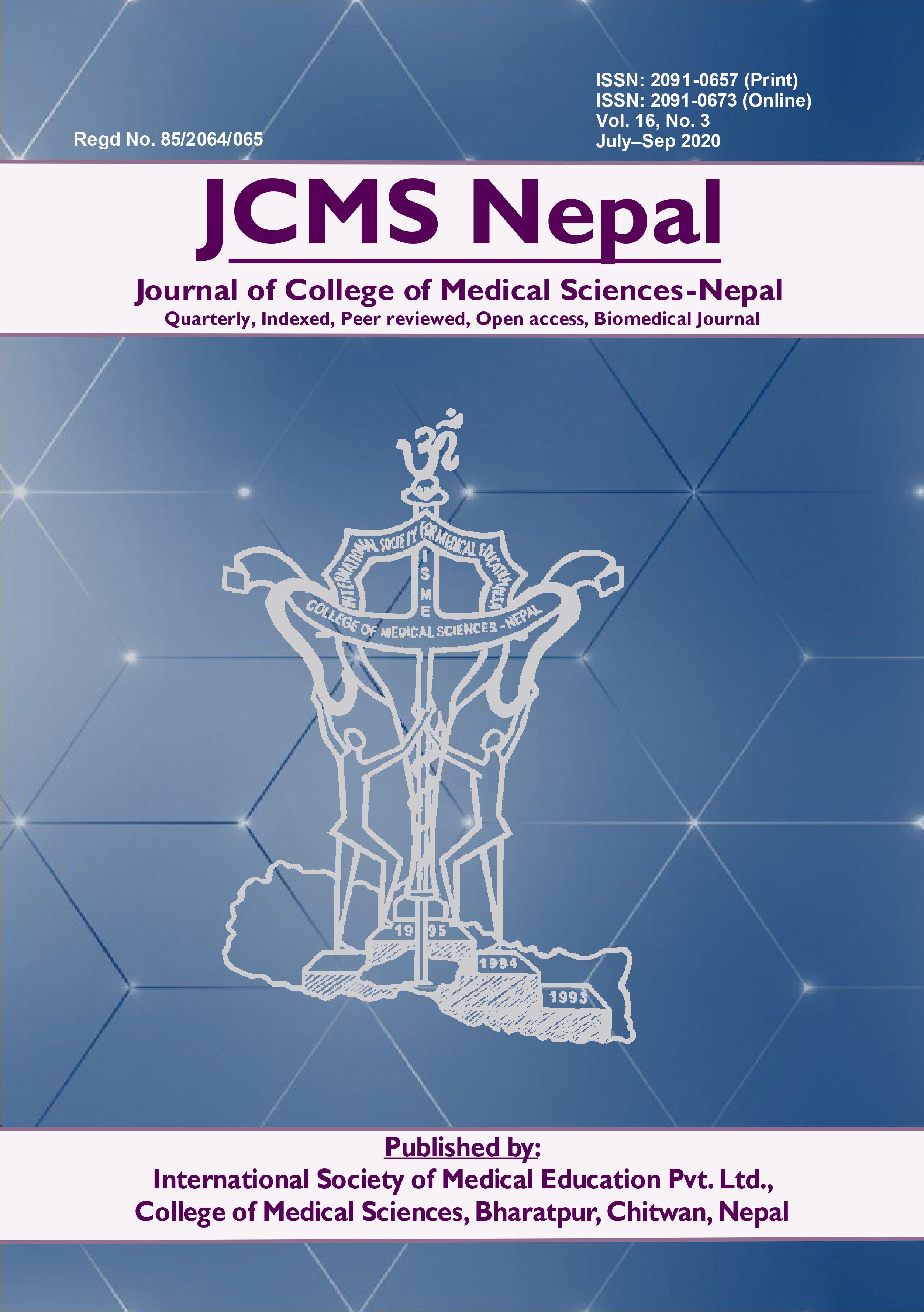Prevalence of Overweight and Obesity among Secondary School Students of Bharatpur-10.
DOI:
https://doi.org/10.3126/jcmsn.v16i3.28645Keywords:
Obesity, overweight, lifestyle, socioeconomic status, body mass indexAbstract
Background: Obesity is one of the major public health problems worldwide. The trend has been increasing in lower socioeconomic country like Nepal. Obesity and overweight are prevalent in all age groups and responsible for various health issues. Children and adolescent group are more vulnerable in developing countries like ours. So, this study is aimed to estimate the prevalence of overweight and obesity among secondary school students of Bharatpur-10.
Methods: It was a cross-sectional study done on class 9 and10 (Two private and two government secondary schools) of Bharatpur-10 Municipality, Chitwan. A predesigned questionnaire was distributed among the students. Weight was recorded by standardized weighing machine and height by metallic measuring tape. Body mass index was calculated by appropriate formula.
Results: There were 266 students (55.6% male and 44.6% female) in this study with the mean age of 14.91 years and majority (74.8%) were in age group 13-15 years. 9.77% students were overweight and 3% obese; overweight was prevalent in 8% male and 18% female students, and 6% public and 20% private school students. Students who take snacks during watching television were significantly overweight as compared to those who do not (13.33% vs 6.11%). There was no significant association between overweight and ethnicity/religion, type of family, number of siblings, family history of diabetes, socioeconomic status, food consumption frequency, hours of watching TV or not involving in physical activities in school.
Conclusions: This study found a relatively high prevalence of overweight among female students of 13-15 years age group from private school. Also eating snacks during watching television is associated with a higher BMI.
Downloads
Downloads
Published
How to Cite
Issue
Section
License
This license enables reusers to copy and distribute the material in any medium or format in unadapted form only, for noncommercial purposes only, and only so long as attribution is given to the creator.




